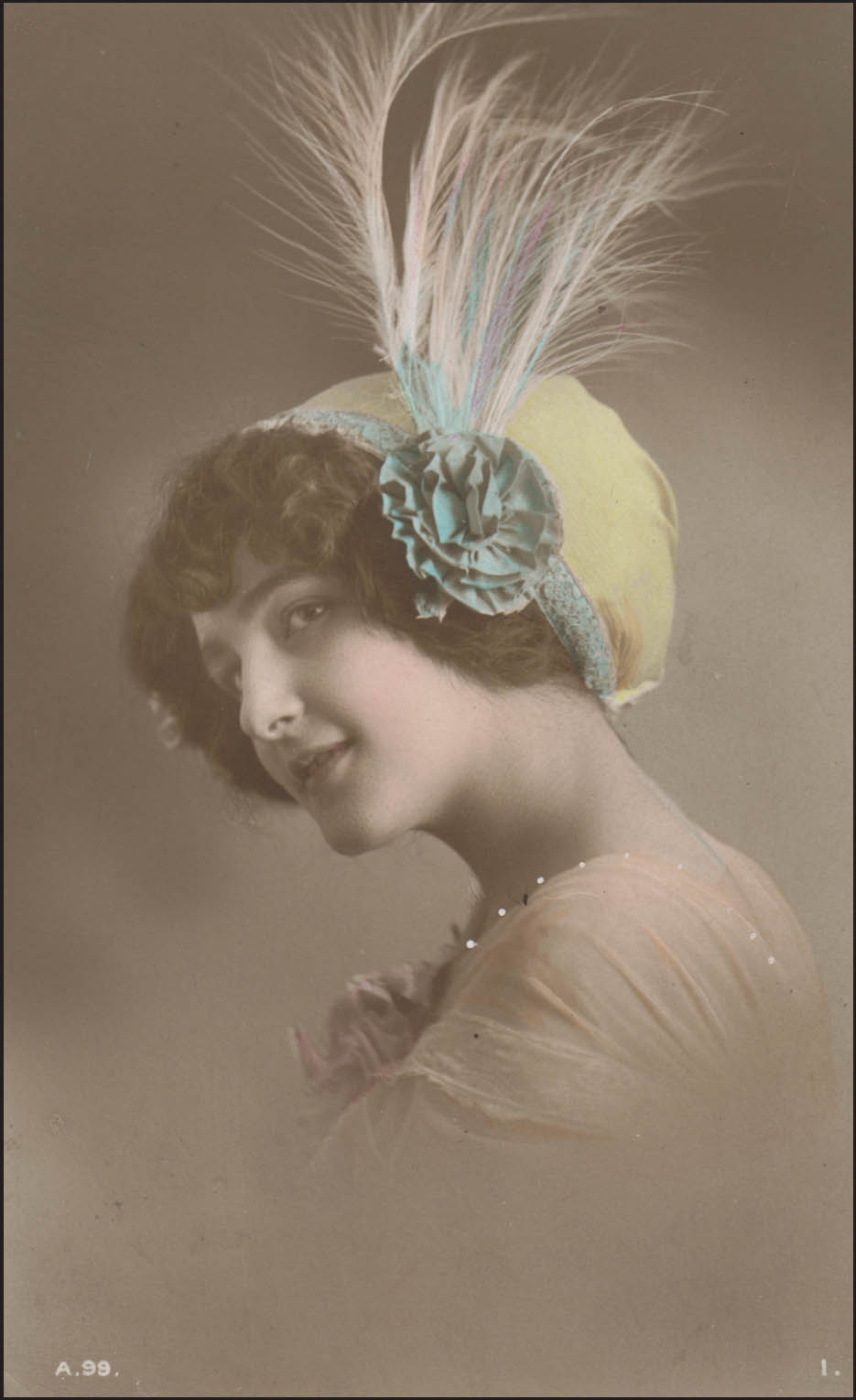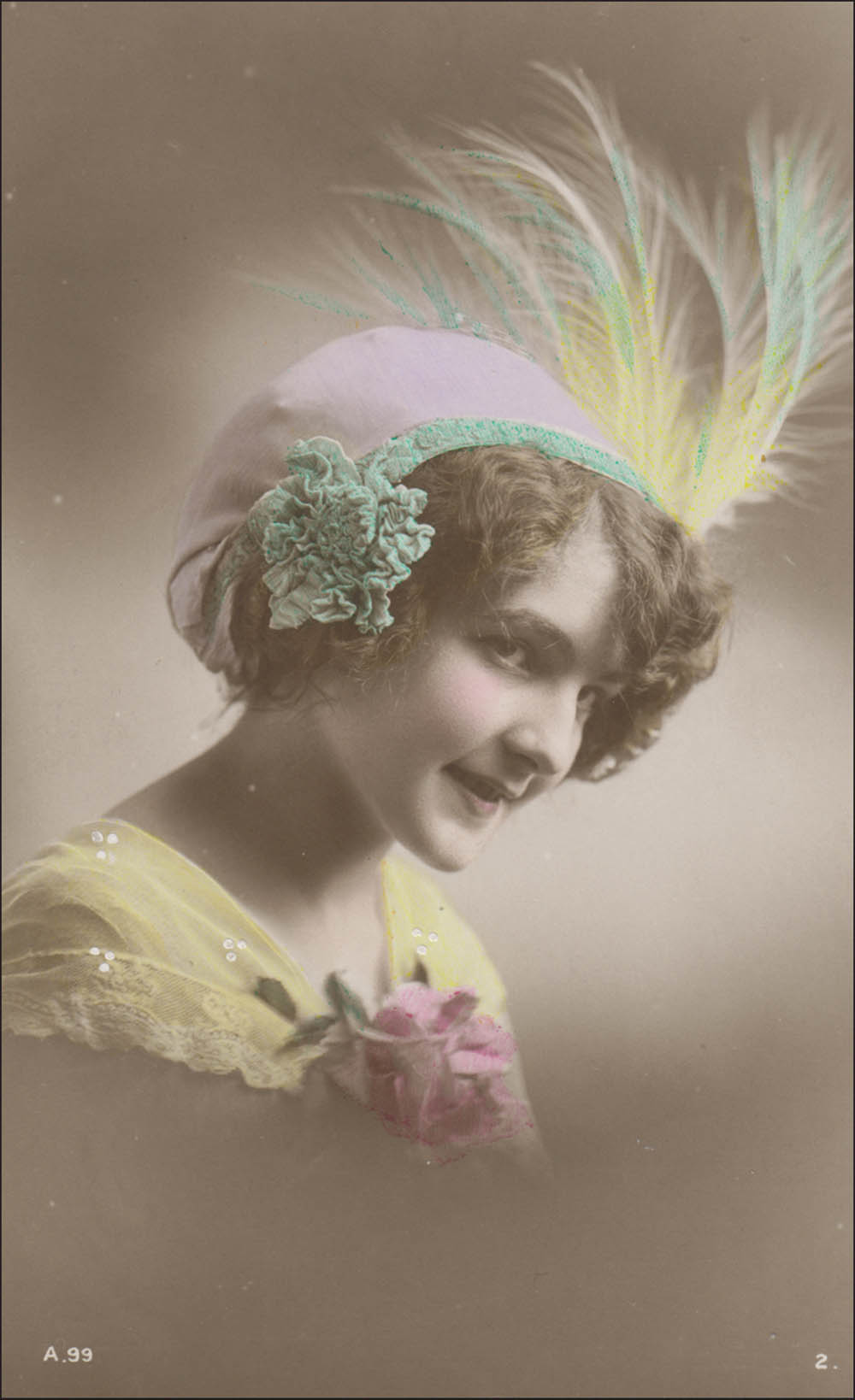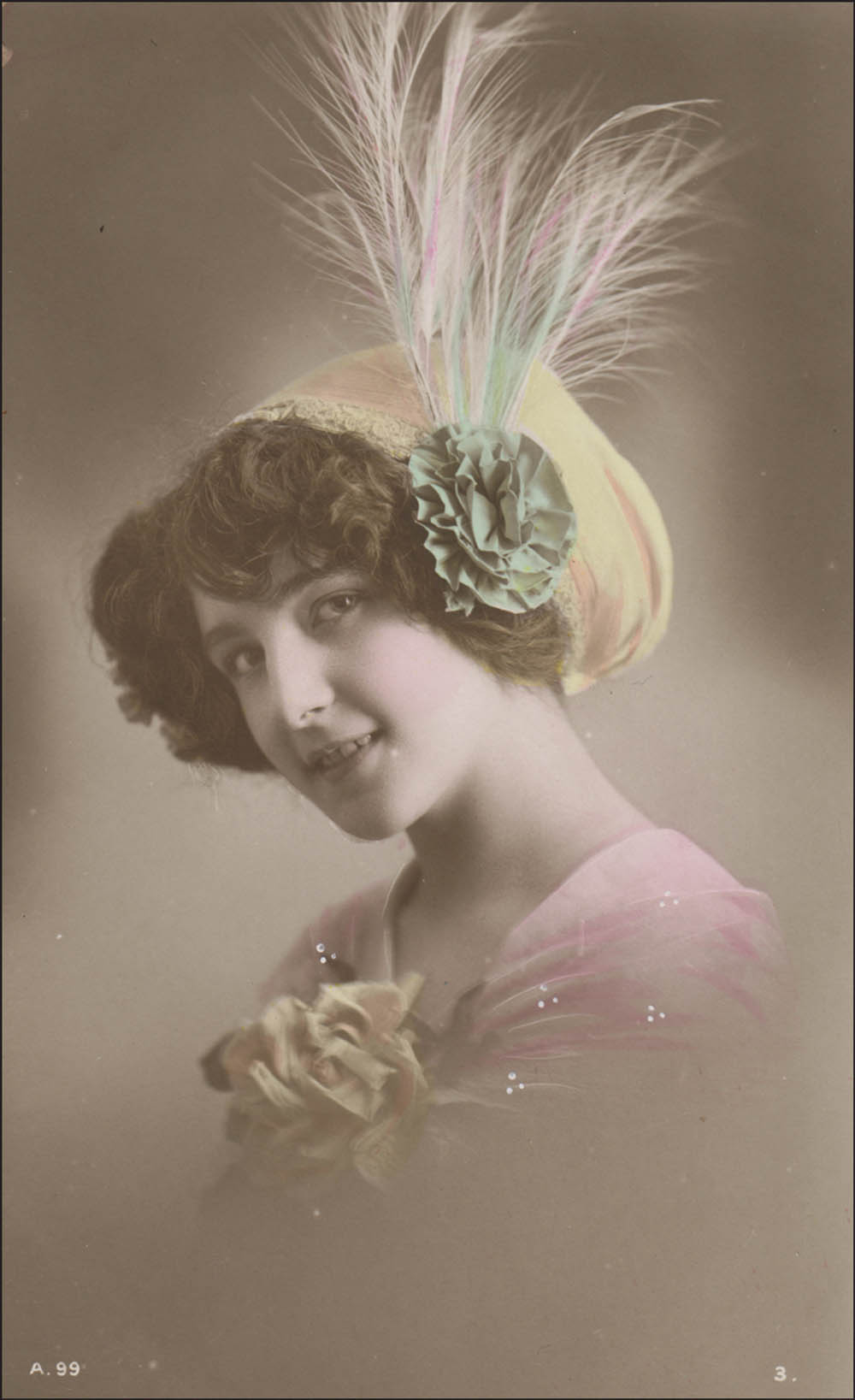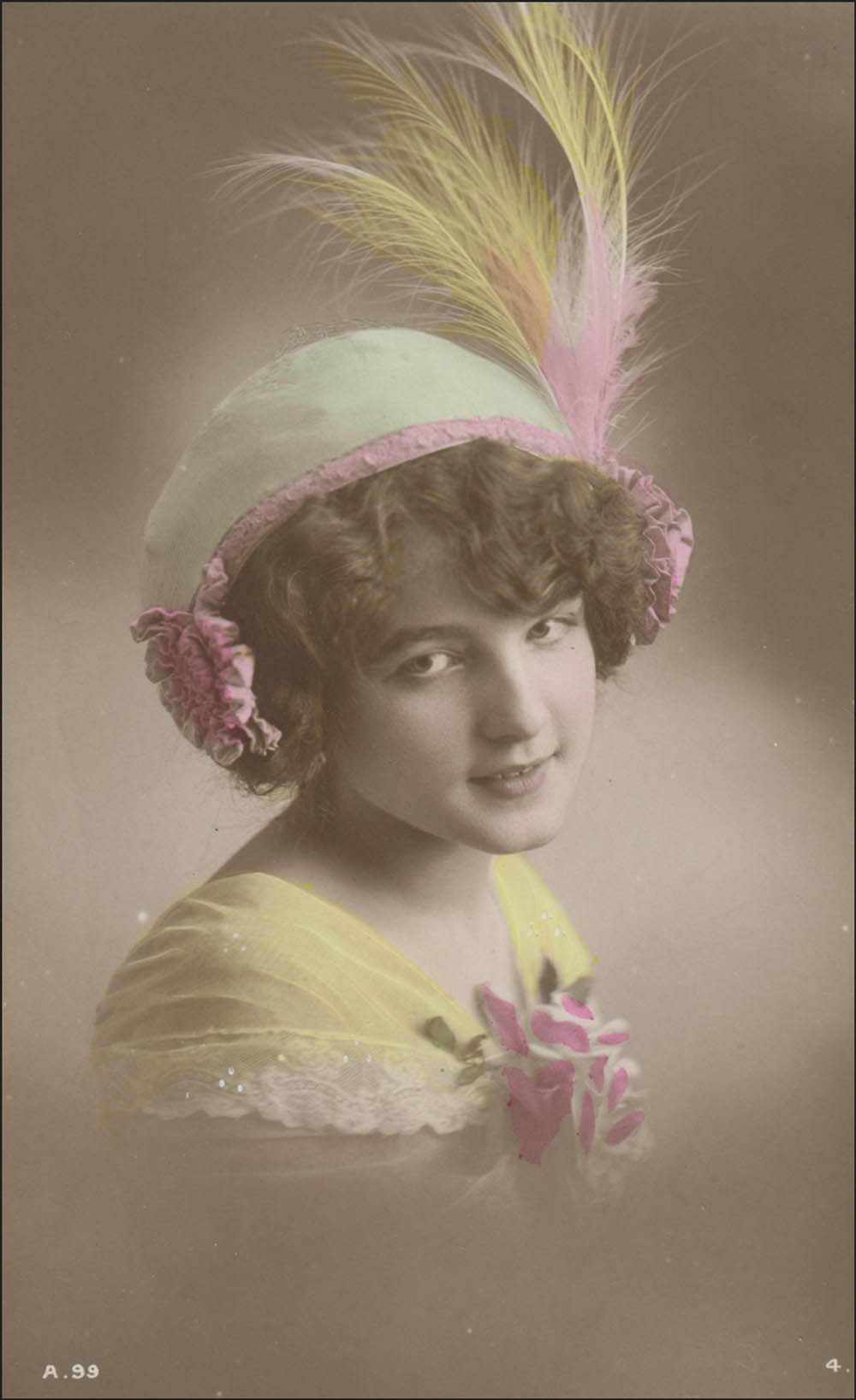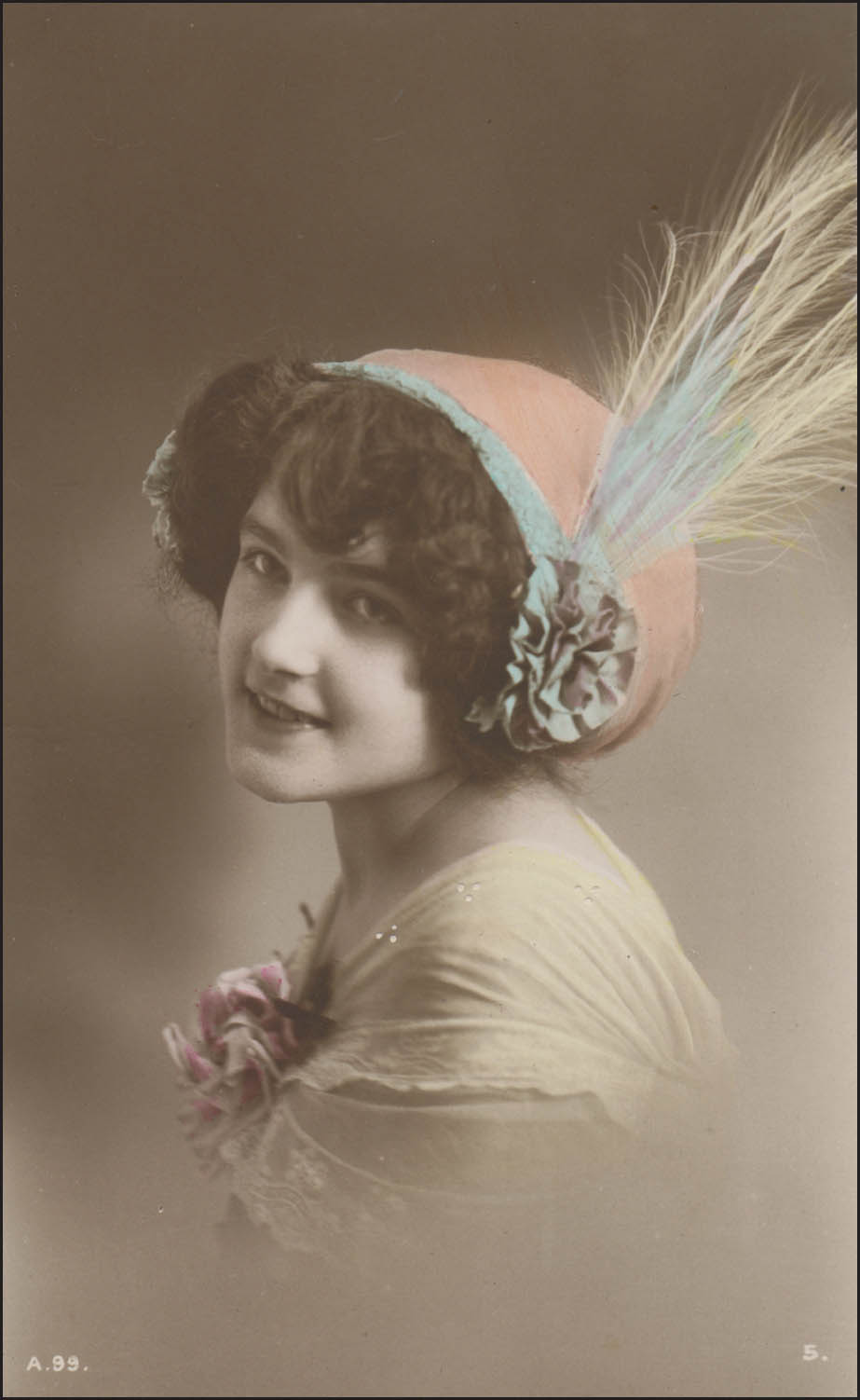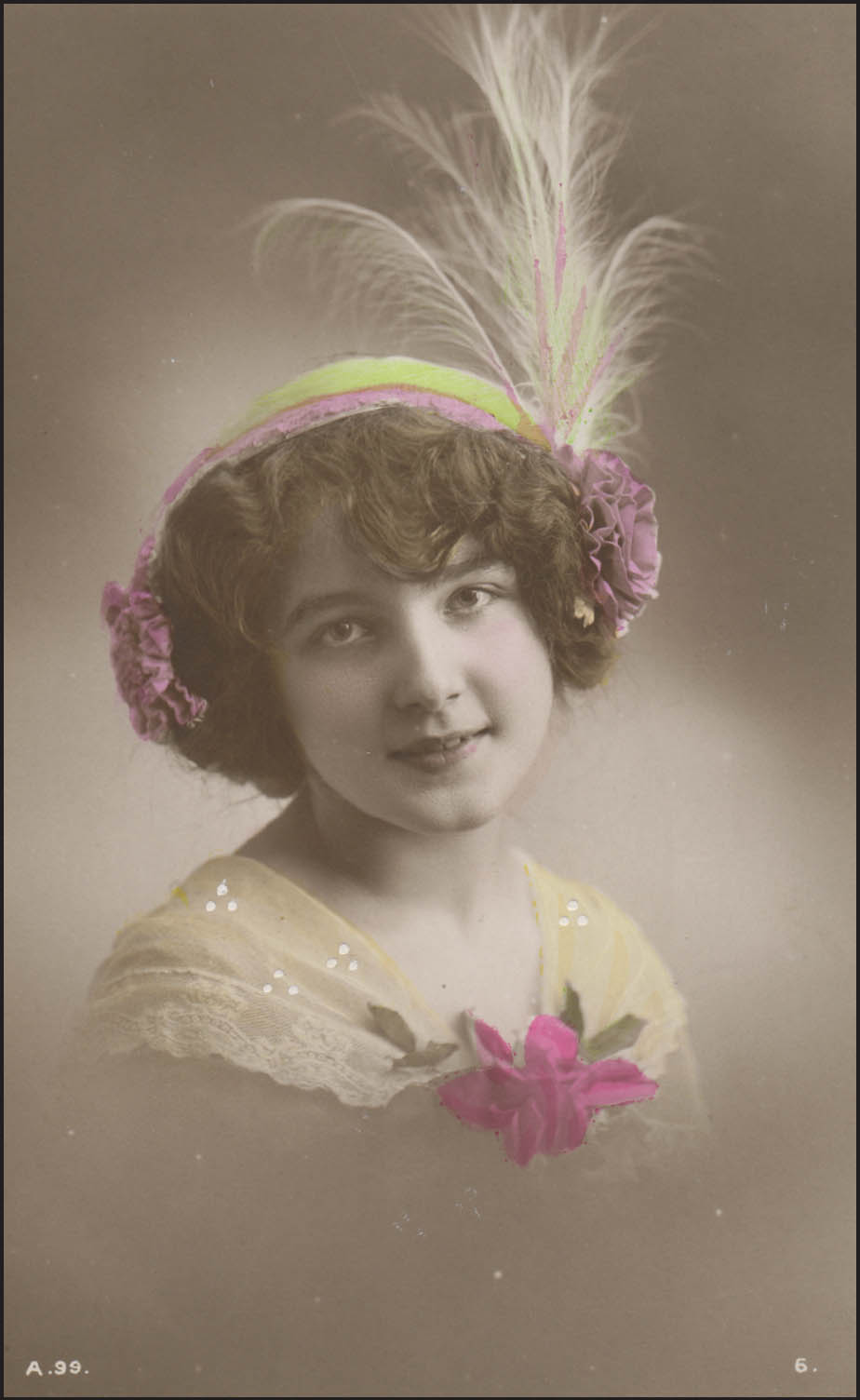

As previously mentioned, the ‘Glamour’ cards themselves were nearly always produced in sets of six different poses of the same young lady model, as a basic matt sepia-toned (or plain black and white) print which then had the colours for the flesh tones, hats and dresses etc. added in the publisher’s own colouring factories or by female home workers and/or outworkers. Sometimes, little bits of real feathers, slivers of material or in some cases glitter were stuck to the face of the cards to create a sort of 3D or decorative effect and it is often possible to find little hand embossed dots forming a part of the presentation. Colour photography of a reasonable standard had not yet really come into play (which it finally did in the mid 1930s) and the girls would colour the cards by hand with oil based inks, photo tints or paints which at times caused illness because the ladies, as they worked, would often lick their brushes to get a better point. These complete sets which are pretty hard to find these days, would have a basic code number at the bottom left or right with a suffix number added at the end. You would therefore have a simple coding system something along the lines of – 33445/1, 33445/2, and so on up to /6. Colouring standards varied greatly with the more skilled colourists doing a great job – producing accurate and tasteful work, while the less accomplished often spoiled the end result with pretty inferior, and at times slapdash, standards. Although I have never been able to find any images of these ladies at work, one can perhaps imagine the factory work benches or for outworkers, dining tables and maybe even the floors of the colourists’ homes being strewn with cards as each individual colour was added and put aside to dry. I’ve yet to discover what was the going rate to colour, say, a dozen or a gross of cards but it certainly can’t have been that much.
